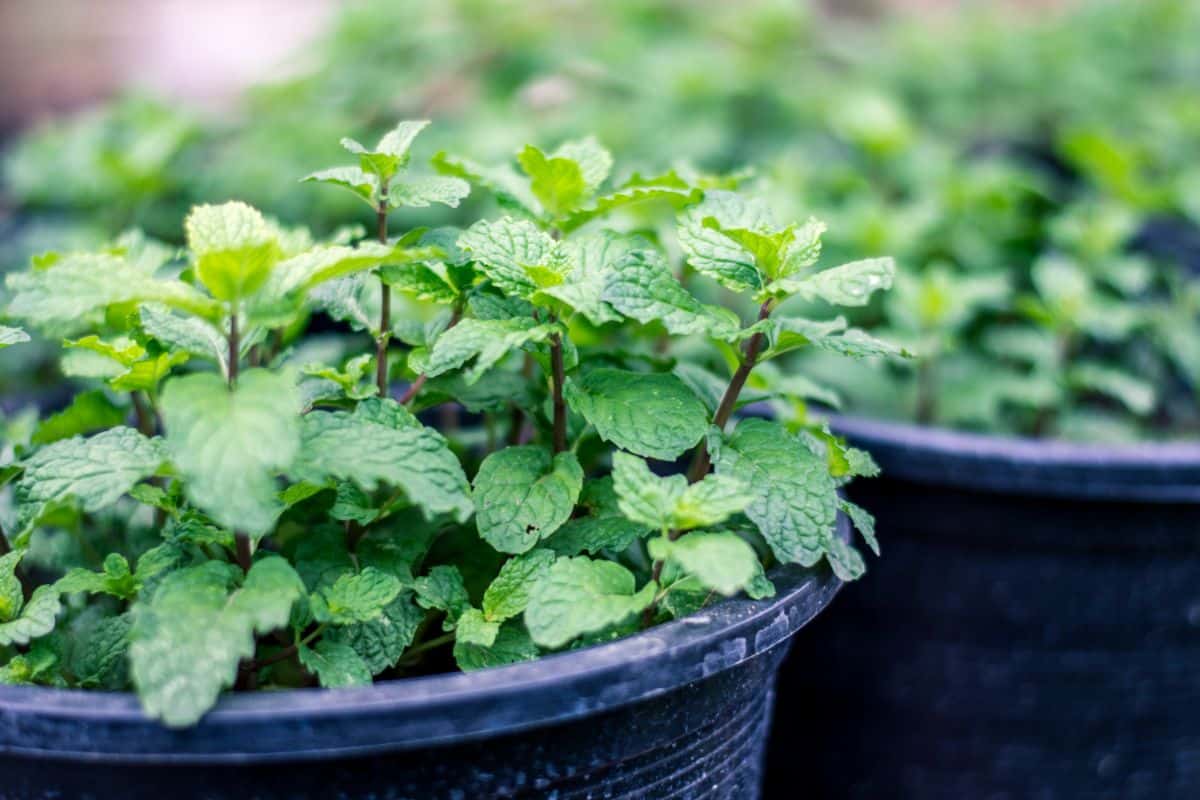
Mint has a refreshing and zingy flavor that’s a perfect addition to desserts, cocktails, salads, and herbal teas. But while many backyard gardeners are very familiar with common mint varieties like peppermint and spearmint, there are many other edible mints that are just as tasty and easy to grow. Whether you have a large herb garden or you keep just a few potted herbs on a sunny windowsill, you’ll find the best edible mint varieties to grow in this guide!
Jump to:
- 18 varieties of edible mint to grow in your herb garden
- 1. Peppermint (Mentha × piperita)
- 2. Spearmint (Mentha spicata)
- 3. Lemon balm (Melissa officinalis)
- 4. Chocolate mint (Mentha × piperita 'Chocolate Mint')
- 5. Apple mint (Mentha suaveolens)
- 6. Mountain mint (Pycnanthemum muticum)
- 7. Corsican mint (Mentha requienii)
- 8. Mojito mint (Mentha villosa)
- 9. Catnip (Nepeta cataria)
- 10. Bee balm (Monarda didyma)
- 11. Banana mint (Mentha arvensis)
- 12. Water mint (Mentha aquatica)
- 13. Lemon mint (Monarda citriodora)
- 14. Dead nettle (Lamium purpureum)
- 15. Licorice mint (Agastache foeniculum)
- 16. Pineapple mint (Mentha suaveolens 'Variegata')
- 17. Lavender mint (Mentha piperita ‘Lavender’)
- 18. Basil mint (Mentha x piperita f.citrata 'Basil')
- Frequently asked questions
- Summary
18 varieties of edible mint to grow in your herb garden
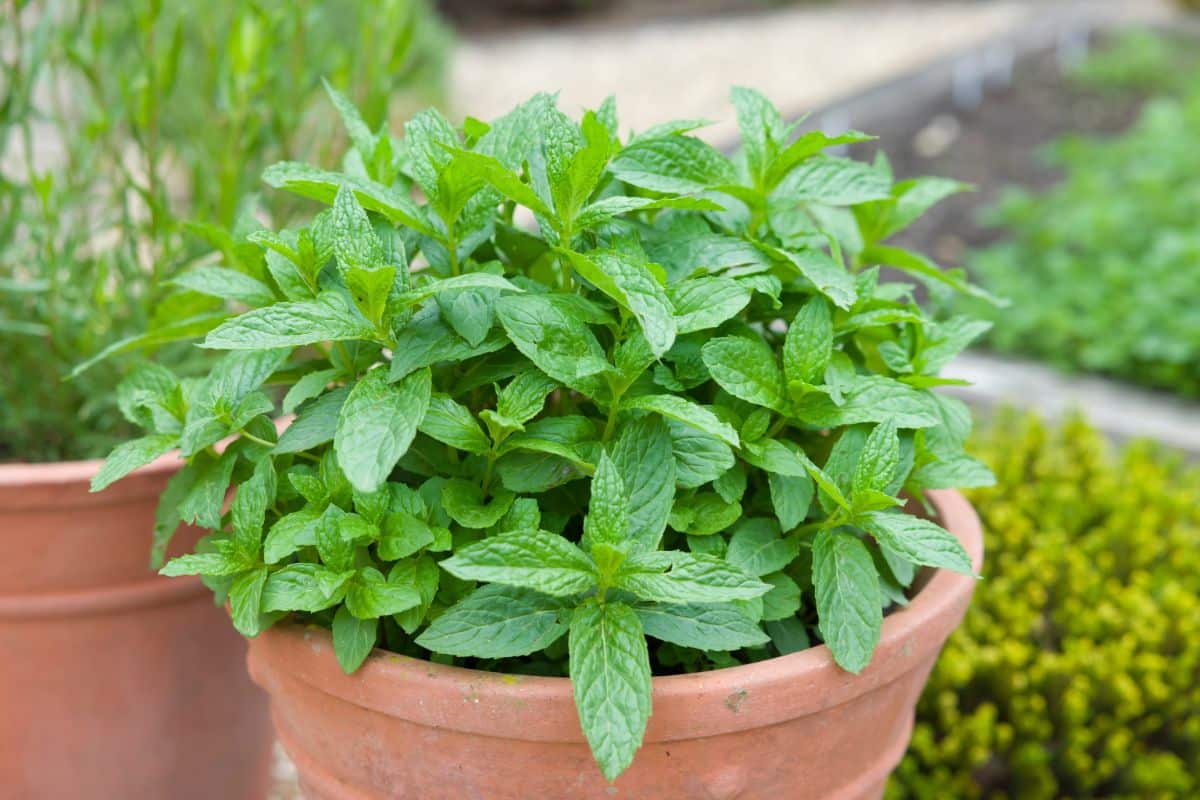
While most gardeners keep mint plants for their edible leaves, mints are vigorous growers that make exceptionally easy and low-maintenance groundcovers and border plants. When allowed to flower, mint plants also produce an abundance of nectar-rich blooms, which are highly attractive to bees and other pollinators. However, as most gardeners know, mint plants can grow aggressively, which is why many growers keep mint plants in pots or dedicated raised beds where mint is less likely to take over.
1. Peppermint (Mentha × piperita)
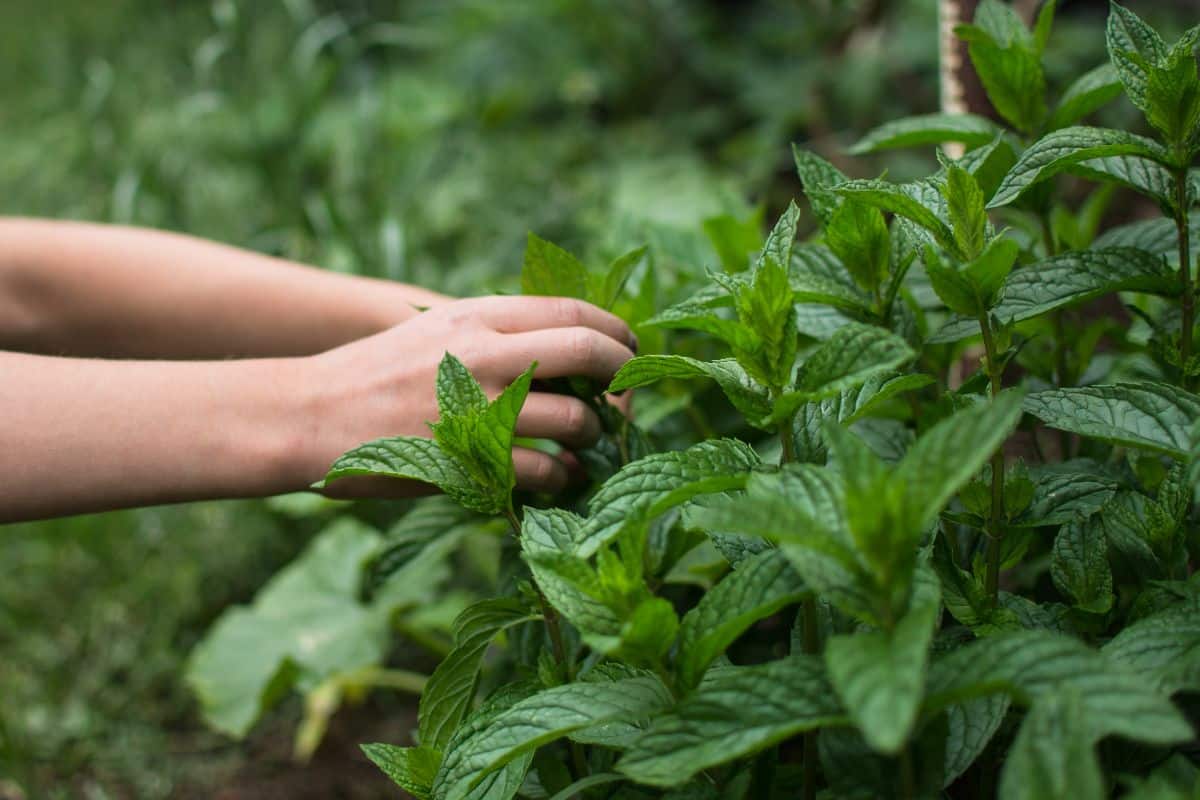
| Plant name: | Peppermint |
| Light requirements: | Full sun to part shade |
| Water requirements: | Moderate |
| Growing zone: | Zones 3 to 10 |
The quintessential mint variety for home kitchens, peppermint has a refreshing and distinct flavor that works well in herbal teas and chocolatey desserts. But while mint is mostly used as an edible, mint leaves can also be dried and blended into potpourri mixes, bath salt blends, and more. Plus, peppermint plants bloom prolifically towards the end of summer, and their pinkish-purple flowers are magnets for pollinators of all sorts.
Like most other mints, peppermint is a fast grower, and it can spread aggressively, but it’s much easier to maintain in pots or raised beds. Compared to other mint types, peppermint plants generally have darker leaves, and their fast-growing stems often boast a purplish hue. Interestingly, peppermint is actually a hybrid mint variety produced by crossing spearmint and water mint together.
2. Spearmint (Mentha spicata)
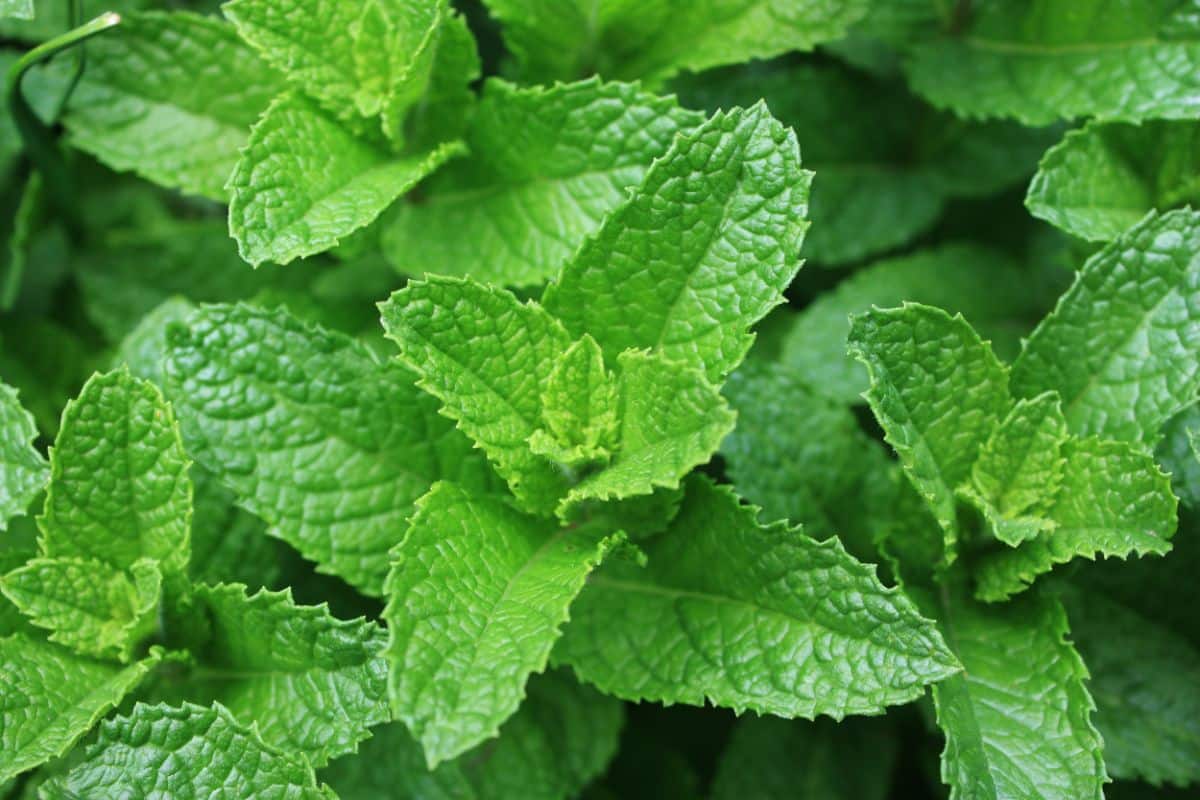
| Plant name: | Spearmint |
| Light requirements: | Full sun to part shade |
| Water requirements: | Moderate |
| Growing zone: | Zones 4 to 11 |
Next to peppermint, spearmint is the other most commonly grown mint variety, and it’s easy to keep in both raised bed gardens and small pots. In fact, spearmint plants are so ubiquitous that many plant nurseries simply label spearmints as “mint” plants. So if you have an unknown “mint” plant growing in your garden, there’s a good chance that it’s spearmint!
Named for its pointy, spear-shaped leaves, spearmint is another fast grower, but its leaves are generally lighter in color than peppermint. Spearmint plants bloom pinkish flowers from June through mid-fall, and like peppermint, those blooms are always a hit with pollinators. Spearmint plants originated in Europe and Asia; however, they’ve become naturalized in North America and other parts of the globe too.
3. Lemon balm (Melissa officinalis)
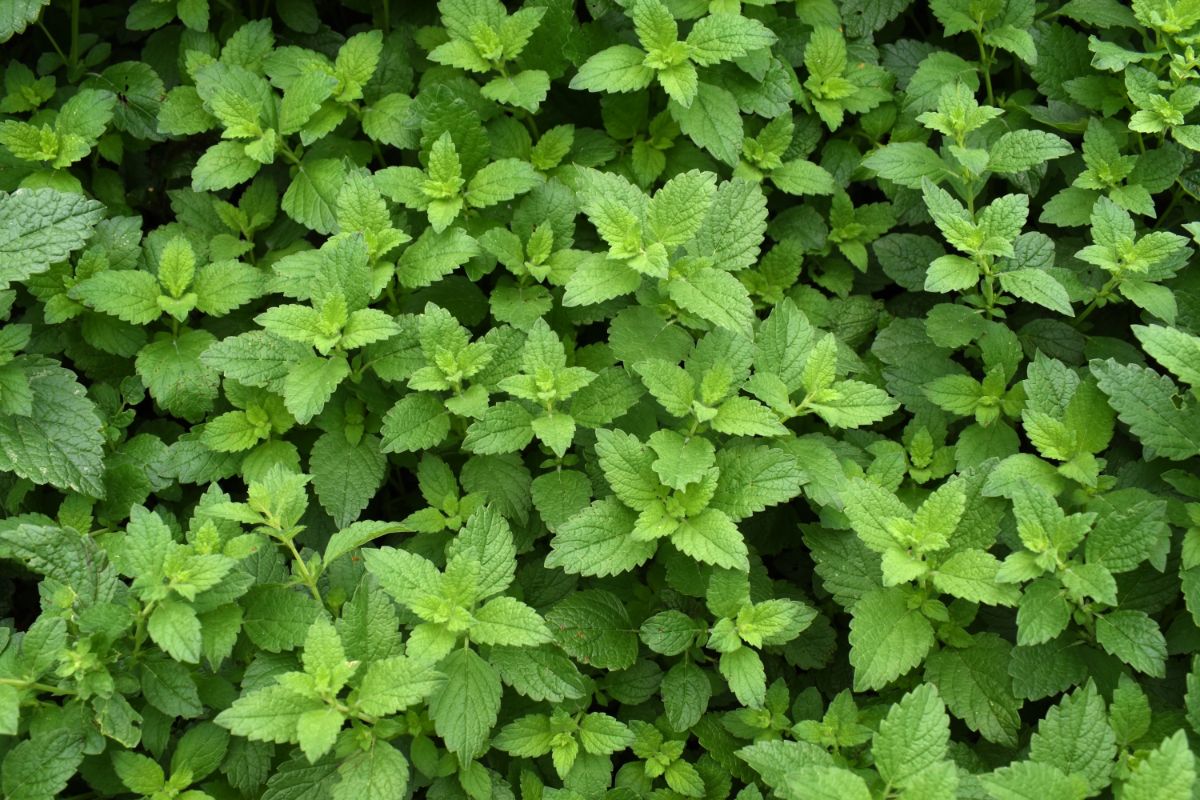
| Plant name: | Lemon balm |
| Light requirements: | Full sun to part shade |
| Water requirements: | Moderate |
| Growing zone: | Zones 4 to 9 |
Some people may not consider lemon balm to be a mint, but this fragrant herb actually belongs to the mint family (Lamiaceae), and lemon balm leaves can be used in much the same way as peppermint or spearmint. Most often, lemon balm leaves are brewed in hot water for herbal teas, but lemon balm’s zesty, lemon-like flavor works well in desserts, candies, and other dishes too. Lemon balm is also a favorite food source for pollinators, but deer tend to steer clear of lemon balm leaves in garden beds.
Like most other mint plants, lemon balm is a beginner-friendly herb that grows well in full sun or part shade, and it can tolerate a range of soils as well. Similar to spearmint, lemon balm has bright green leaves, but lemon balm flowers are usually lighter in color, and they’re often white with hints of pink or yellow coloration. What’s more, lemon balm doesn’t grow as aggressively as peppermint and spearmint, although you may still want to keep lemon balm plants in pots to keep them more manageable.
4. Chocolate mint (Mentha × piperita 'Chocolate Mint')
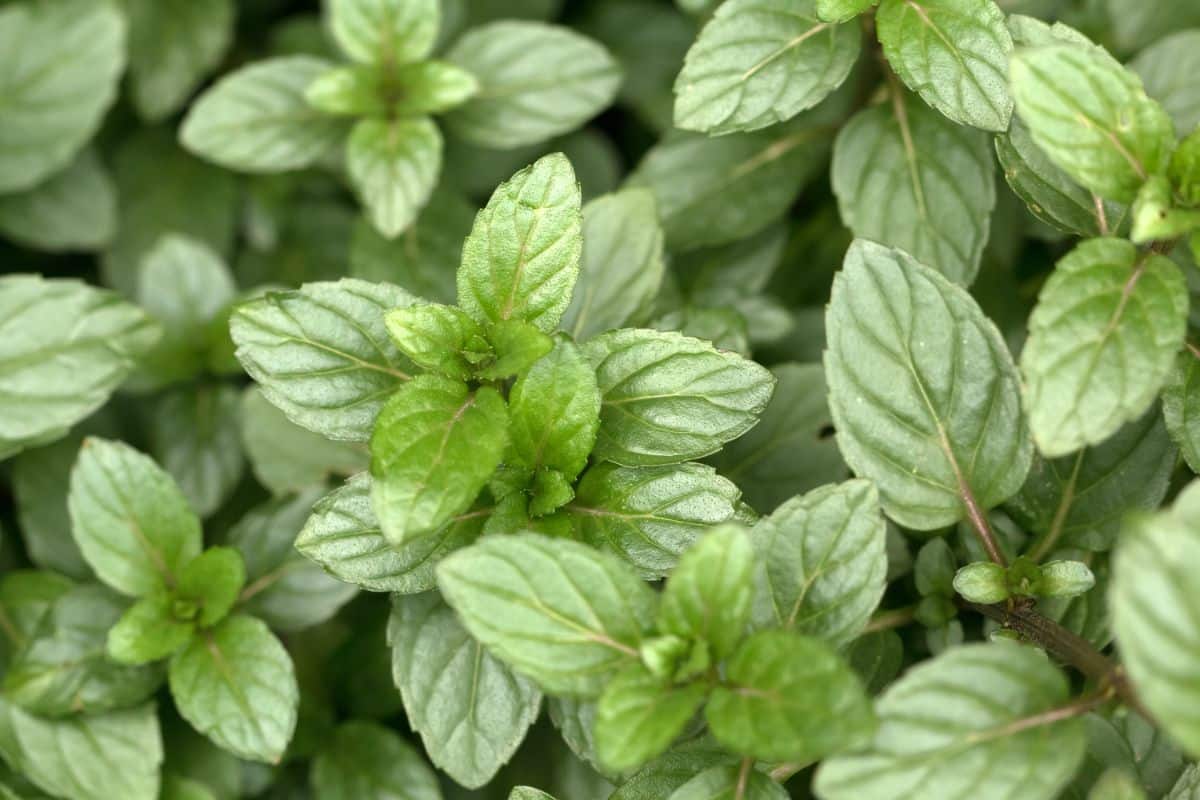
| Plant name: | Chocolate mint |
| Light requirements: | Full sun to part shade |
| Water requirements: | Moderate |
| Growing zone: | Zones 4 to 9 |
With a name like “chocolate mint,” it’s no wonder why this mint variety is a top choice among backyard gardeners. Chocolate mint is technically a variety of peppermint; however, compared to true peppermint plants, chocolate mint has a darker look with deeper green leaves and deep purple stems. This mint variety also has a slightly sweet aftertaste, which makes it a delicious addition to teas, cocktails, and desserts.
While chocolate mint is a prolific grower, the plant itself is sterile, and it cannot be propagated by seeds. But chocolate mint cuttings will easily root in water or soil, so if you want to make more chocolate mint plants, take some cuttings! To get the best propagation results, take 3 to 4” long cuttings from healthy plant stems and cut the plant’s stems at a 45-degree angle to increase the surface area for better water absorption.
5. Apple mint (Mentha suaveolens)
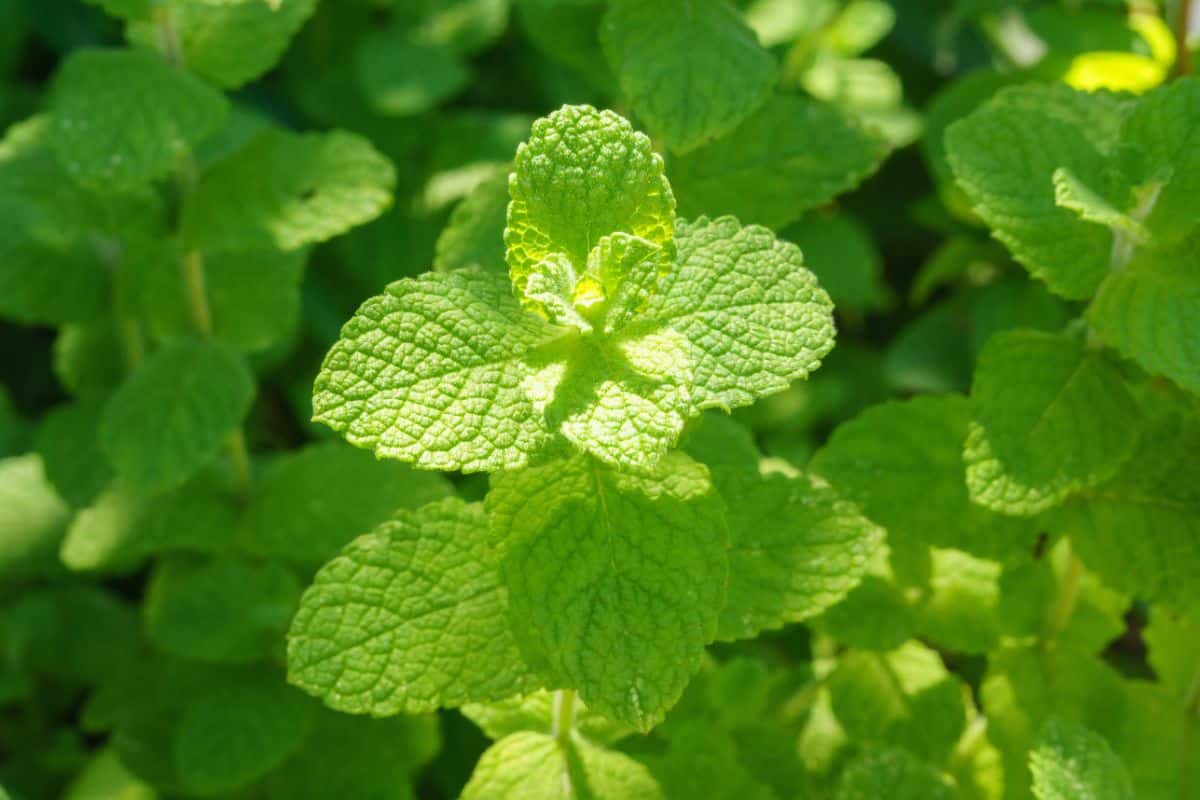
| Plant name: | Apple mint |
| Light requirements: | Full sun to part shade |
| Water requirements: | Moderate |
| Growing zone: | Zones 5 to 9 |
Also known as wooly mint or fuzzy mint, apple mint is another fragrant mint option, but this mint plant has fuzzy stems and white or pink flowers. Apple mint flowers start to bloom towards the end of summer, but they can last well into fall -- providing much-needed nectar and pollen for insects at the end of the season. But, like many other mint plants, apple mint can be invasive in some areas, so you’ll want to prune your plant often or grow it in pots to keep it under control.
Taste-wise, apple mint has an indisputable minty fresh flavor but with fruity undertones that make the plant quite unique. When crushed, the plant’s leaves exude a sweet and refreshing odor that smells a bit like spearmint mixed with granny smith apples. Propagated by seeds or stem cuttings, apple mint is an adaptable plant that grows readily in a range of soils, and plants generally reach 2 to 3’ in height when mature.
6. Mountain mint (Pycnanthemum muticum)

| Plant name: | Mountain mint |
| Light requirements: | Full sun to part shade |
| Water requirements: | Moderate |
| Growing zone: | Zones 4 to 8 |
If you’re reluctant to grow mint plants because of their invasive tendencies, mountain mint may be the mint variety for you. This North American native was first discovered in Pennsylvania in 1790, and it can be found growing naturally along forest margins and other areas with moist soils. Unlike other mints, mountain mint does not grow invasively, but it will still spread via underground rhizomes, which can be controlled with pruning or by cutting the rhizomes off with a sharp spade.
Mountain mint generally blooms from July to September, and the plant’s pinkish-white flowers appear on the top of its upright stems. For even more ornamental appeal, mountain mint plants also have silvery bracts, which are modified leaf structures also seen on some varieties of spurge and poinsettia. Because of this silvery coloration, mountain mint looks particularly appealing when grown near lamb’s ear, lavender, and silver mound artemisia.
7. Corsican mint (Mentha requienii)
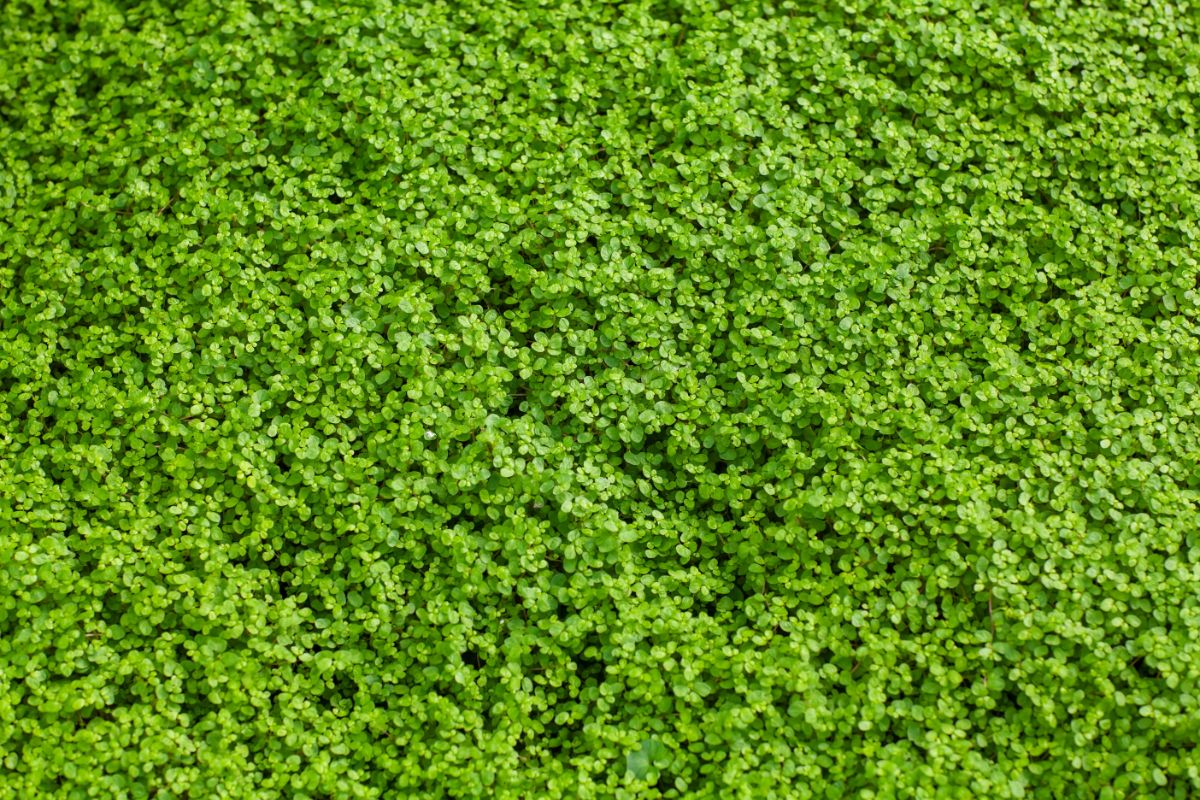
| Plant name: | Corsican mint |
| Light requirements: | Full sun to part shade |
| Water requirements: | Moderate |
| Growing zone: | Zones 7 to 11 |
Corsican mint is another mint variety that doesn’t have invasive tendencies, and this mint can actually prove challenging to grow in some areas. Only hardy to USDA growing zone 7, Corsican mint is native to Sardinia and Corsica, although it can grow in other areas with mild winters. Unlike other mint types, this mint has tiny, rounded leaves and a low growth habit, which makes it an ideal groundcover, although Corsican mint also grows beautifully in pots.
Similar to creeping thyme, Corsican mint can be grown along garden walkways and flower bed borders, where garden visitors can enjoy the plant’s delicate, minty aroma. What’s more, Corsican mint also blooms abundantly throughout summer, and the plant’s tiny, purple flowers are sure to draw the eye… and pollinators too! True to its name, Corsican mint has a delicious, minty flavor, and it’s commonly used to flavor the liqueur crème de menthe.
8. Mojito mint (Mentha villosa)
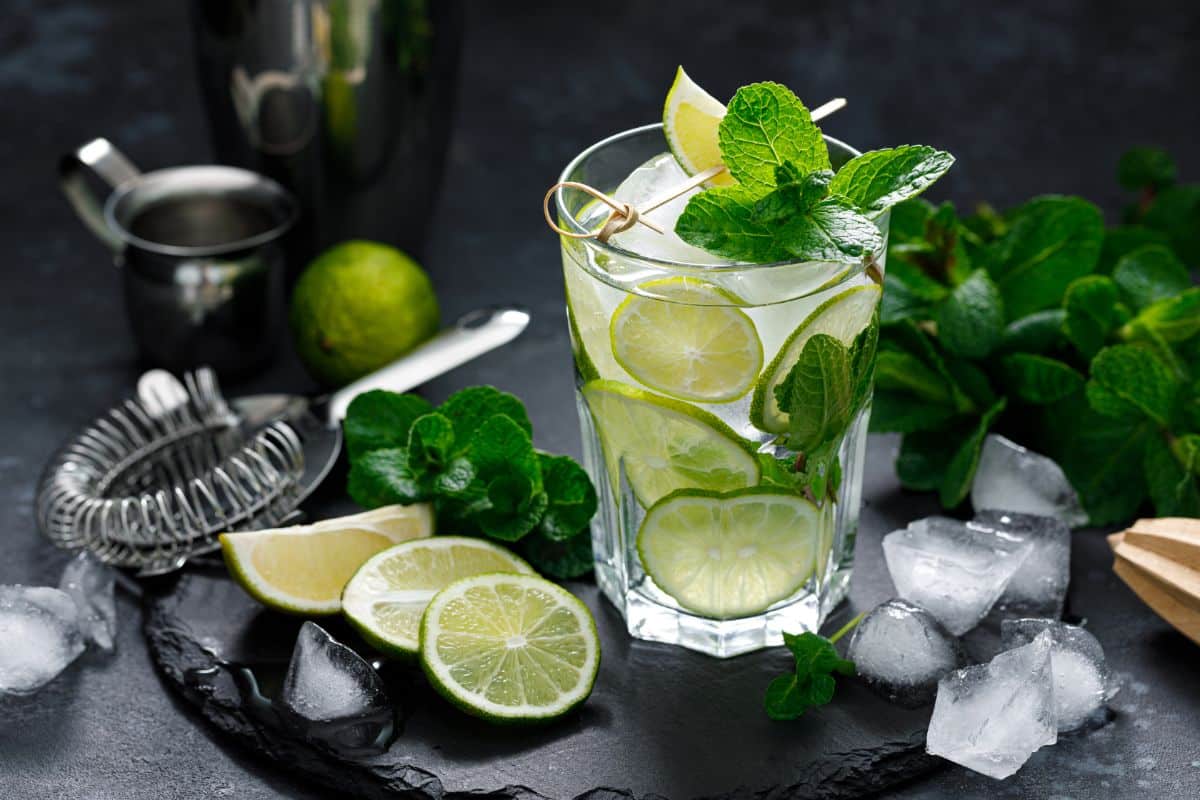
| Plant name: | Mojito mint |
| Light requirements: | Full sun to part shade |
| Water requirements: | Moderate |
| Growing zone: | Zones 5 to 9 |
If you enjoy making mojitos, you can use standard spearmint in your drinks. However, if you are a foodie and love keeping recipes as authentic as possible, you’ll need to save some room in your garden for a mojito mint plant or two! Mojito mint is the mint variety that’s commonly used in Cuba, where mojitos originated, although sometimes Yerba Buena is used to make the cocktails too.
Compared to spearmint, mojito mint has a milder flavor with distinct citrus notes, which work perfectly in cocktail making. Mojito mint leaves are also larger than the leaves on many other mint plants, which makes them much easier to muddle! When mature, mojito mint plants generally spread about 2’ tall by 3’ wide, but they have a vigorous root system like most other mint varieties.
9. Catnip (Nepeta cataria)

| Plant name: | Catnip |
| Light requirements: | Full sun to part shade |
| Water requirements: | Moderate |
| Growing zone: | Zones 3 to 9 |
Catnip is another plant that’s not an obvious choice if you’re on the hunt for mint. But catnip also belongs to the mint family, and it’s fast-growing and fragrant… just like other mints. Plus, catnip flowers are highly attractive to pollinators, and the plant’s strong scent is known to repel mosquitos and other pests too!
While catnip is most famously used as a stimulating treat for cats, catnip leaves are edible for humans, and they make a delicious herbal tea. Catnip has a relatively mild flavor with floral and fruity notes, which also taste delicious in homemade jellies and desserts. Catnip doesn’t grow as vigorously as peppermint and spearmint plants, though, so you may not want to grow catnip with these aggressive growers.
10. Bee balm (Monarda didyma)
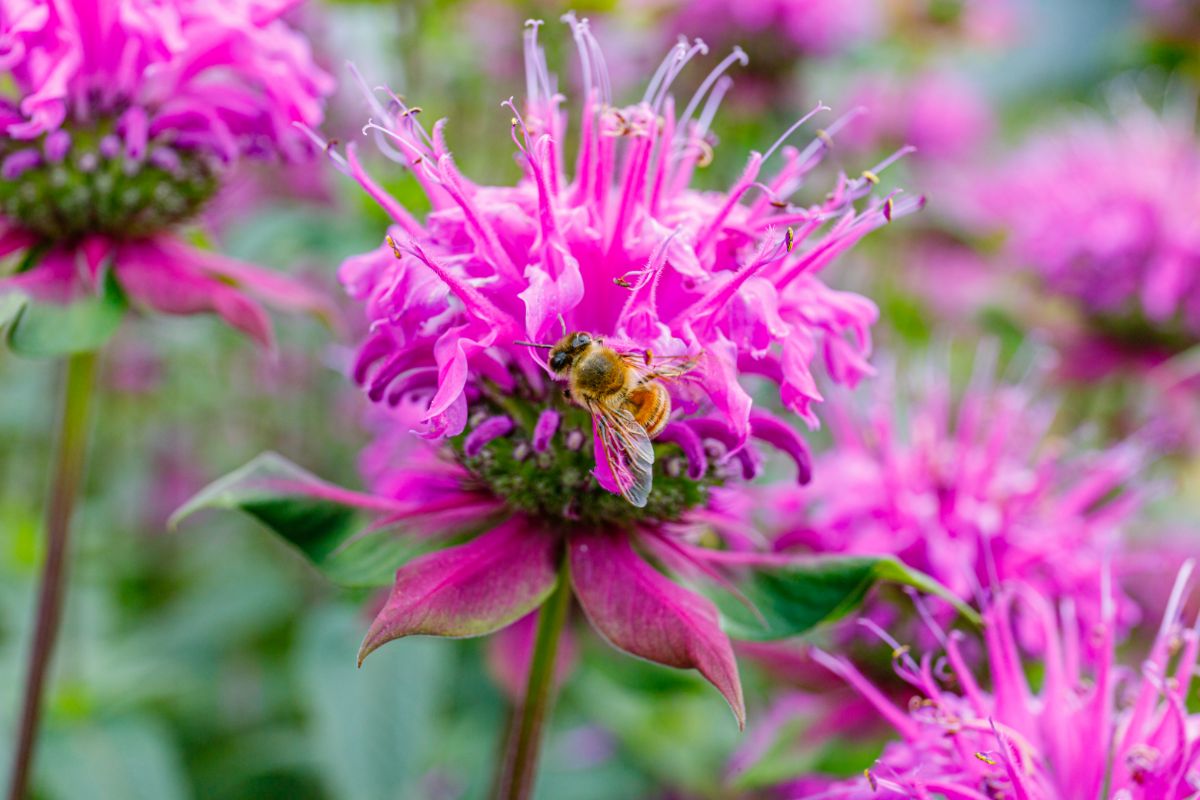
| Plant name: | Bee balm |
| Light requirements: | Full sun to part shade |
| Water requirements: | Moderate |
| Growing zone: | Zones 3 to 9 |
Like catnip, bee balm isn’t generally thought of as a mint, but it belongs to the mint family too! Also known as wild bergamot, bee balm is most famously used as a pollinator and ornamental plant, but bee balm leaves and flowers are both edible. Similar in flavor to oregano, bee balm can be brewed into teas, or it can be used dried, cooked, or fresh to flavor salads and other dishes.
Bee balm grows perennially in most areas, and it is well-known for its brilliant, spiky red or purple flowers, which are highly attractive to hummingbirds. Blooming from mid-summer to fall, bee balm flowers are a solid choice if you want to add late-season color to your ornamental beds. Plus, these plants readily self-sow after blooming, and you can easily get more bee balm plants for free if you don’t deadhead the flowers after they fade.
11. Banana mint (Mentha arvensis)
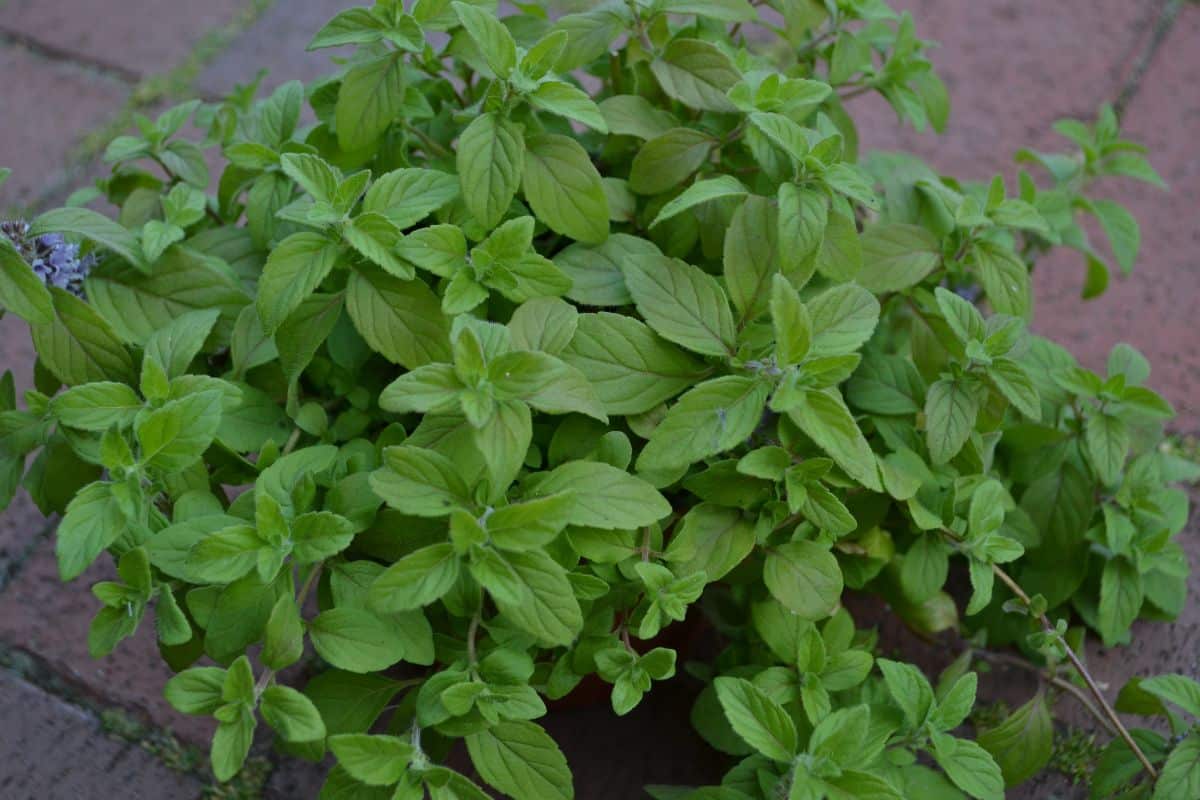
| Plant name: | Banana mint |
| Light requirements: | Full sun to part shade |
| Water requirements: | Moderate |
| Growing zone: | Zones 5 to 11 |
Banana mint is less commonly grown than some of the other mint varieties on this list, but it is a fun mint cultivar to keep. With a distinct fruity aroma and a flavor that tastes like mint and bananas, banana mint can be used to flavor ice cream, muffins, brownies, and other sweet treats. And, of course, banana mint leaves can be used in cocktails, herbal teas, and iced teas too!
Like other mints, banana mint is a fast grower, but it is much less unruly when grown in containers. Tolerant of both sun and part shade, banana mint is a beginner-friendly plant that doesn’t need a lot of fuss or attention. However, if you’re plants look a bit leggy by midsummer, you can prune your plants back by about ⅓ to refresh them and rejuvenate their growth.
12. Water mint (Mentha aquatica)
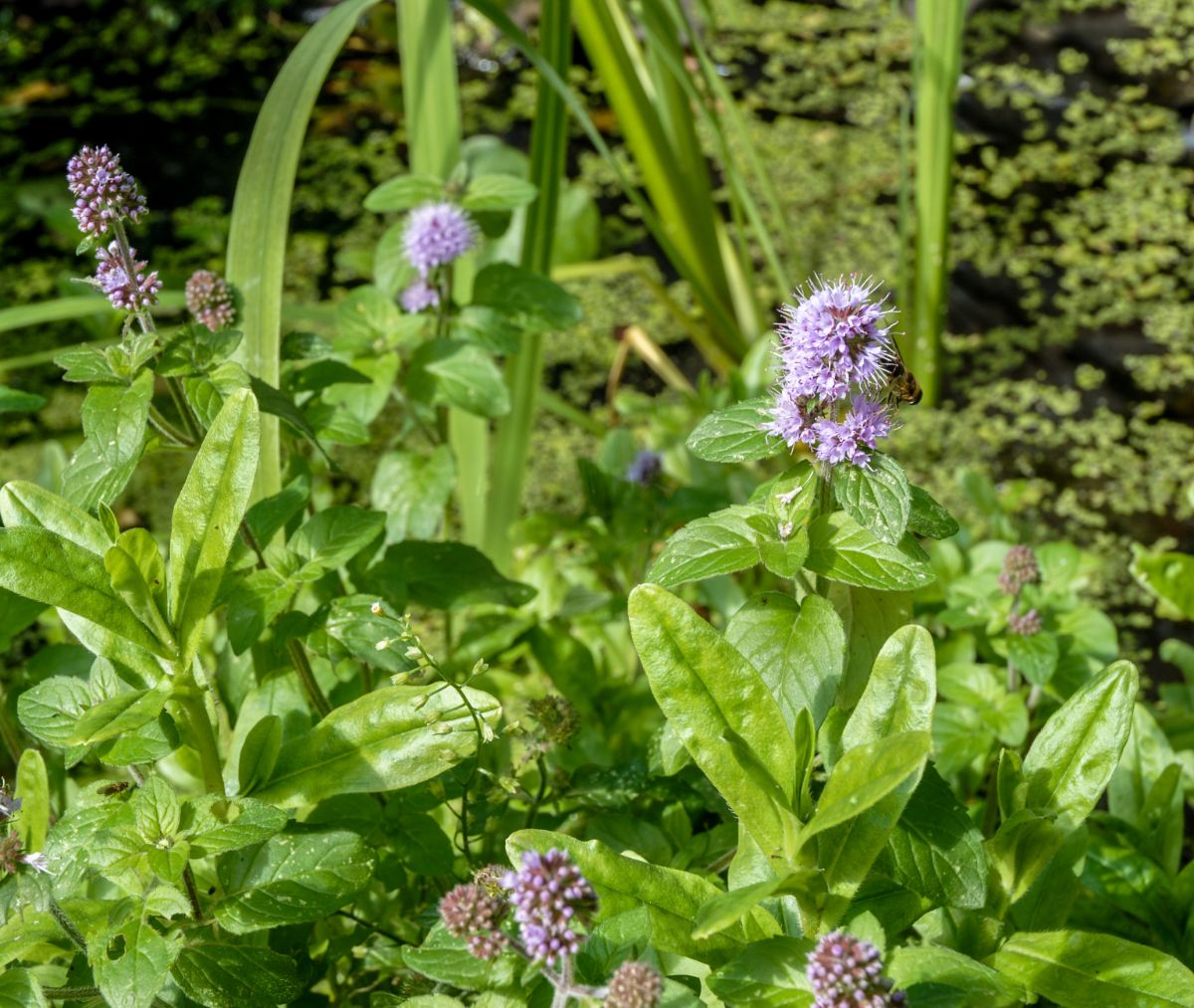
| Plant name: | Water mint |
| Light requirements: | Full sun to part shade |
| Water requirements: | Moderate |
| Growing zone: | Zones 8 to 11 |
A good choice to grow in rain gardens or on the margins of ponds and other water features, water mint commonly grows in streams and other boggy areas, but it can adapt to gardens. Native to Europe, Asia, and Africa, water mint is a great plant to grow if you want to benefit pollinators and other wildlife. However, water mint’s purplish flowers are also pretty enough for ornamental use!
Unlike some of the other mint plants on this list, water mint is not particularly cold hardy, and it only grows perennially in USDA zones 8 through 11. But if you love the look and feel of water mint, you can always grow these plants in pots and overwinter them indoors if you live in a cooler climate. When kept in pots, water mint will need to be watered every few days, but in water gardens, water mint can be grown in up to 3” of water!
13. Lemon mint (Monarda citriodora)
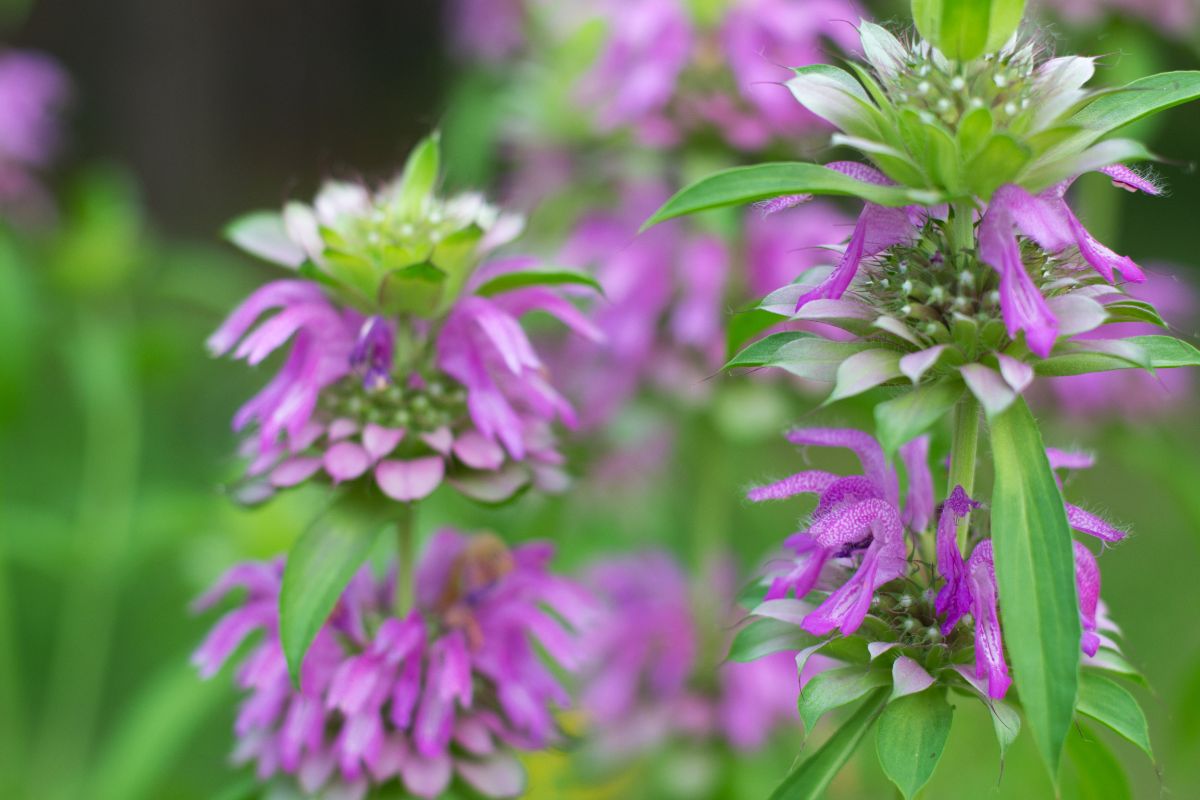
| Plant name: | Lemon mint |
| Light requirements: | Full sun to part shade |
| Water requirements: | Moderate |
| Growing zone: | Zones 5 to 9 |
Like mountain mint, lemon mint is another North American native that grows in the wild from Missouri and Kansas to Mexico. Also known as horsemint and lemon bee balm, lemon mint is named for its fragrant leaves, which emit a delicate, citrus-like aroma when crushed. That scent also makes lemon mint deer resistant, and the Peoples of the First Nations sometimes used lemon mint as an insect repellant too!
While lemon mint is mostly grown as an ornamental today, lemon mint leaves are edible, and they can be used in teas or to flavor stews and other savory treats. Blooming from May to July, lemon mint is a relatively showy mint variety with tall purple, spire-like flowers that can hold their own in any ornamental or herb bed. For best results, grow lemon mint in full sun to dappled shade and keep your plants well watered so that the soil is consistently moist but never soggy.
14. Dead nettle (Lamium purpureum)
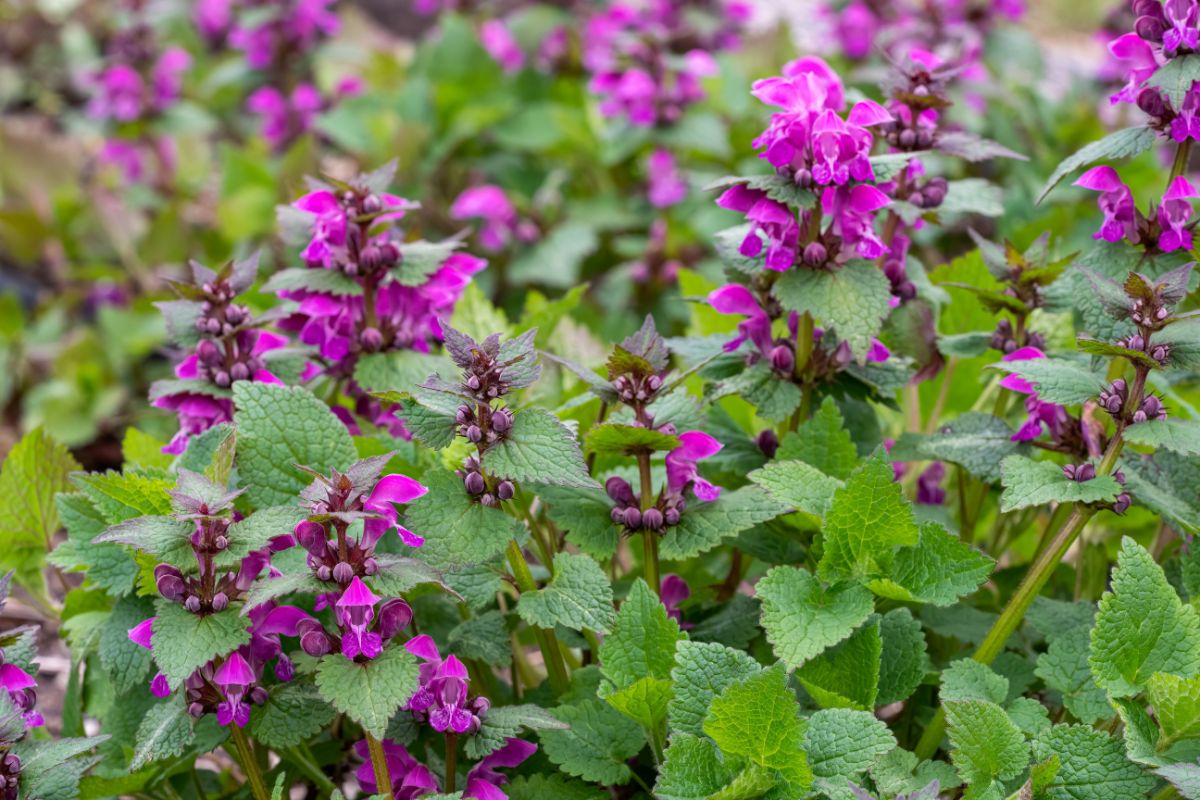
| Plant name: | Dead nettle |
| Light requirements: | Full sun to part shade |
| Water requirements: | Moderate |
| Growing zone: | Zones 4 to 10 |
Dead nettle is mostly grown as an ornamental plant, and its easygoing nature also makes dead nettle an exceptional, low-maintenance groundcover. However, dead nettle belongs to the mint family, too, and its edible leaves can be used in salads, baked goods, and pestos. Just be warned, dead nettle doesn’t have a very minty flavor, but it is slightly sweet and a bit peppery!
Dead nettle gets its name from the fact that its stems and leaves are stinger-free, unlike the similar-looking stinging nettle. And while dead nettle leaves are ornamental on their own, these plants also produce pretty purple flowers that are favorite snacking spots for bees and other beneficial insects. Mature dead nettle plants grow to about 6” high by 2’ wide, but these plants can become invasive in some areas, so take care when planting them.
15. Licorice mint (Agastache foeniculum)
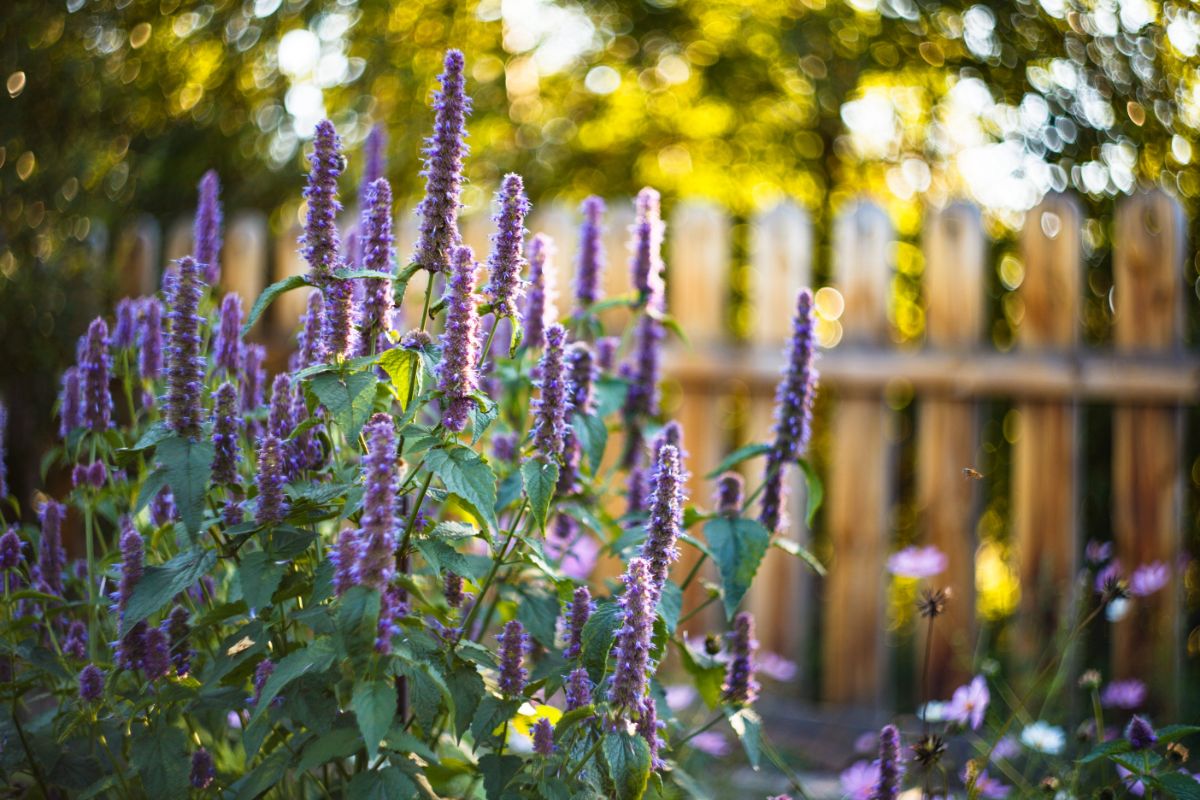
| Plant name: | Licorice mint |
| Light requirements: | Full sun to part shade |
| Water requirements: | Moderate |
| Growing zone: | Zones 5 to 9 |
Also known as anise hyssop, licorice mint may not be what most people think of when they envision mint plants; however, licorice mint is another edible and tasty member of the mint family. Most gardeners grow licorice mint in ornamental beds or pollinator habitats as these plants are stunning and highly attractive to butterflies, including skippers. However, licorice mint can also be included in herb gardens, or it can be grown in planters on a sunny front porch.
Non-invasive yet easy to keep, licorice mint plants grow to about 4’ tall, and they are sturdy perennials even in USDA growing zone 5. Both the leaves and flowers of licorice mint are edible, and they have a licorice-like flavor that tastes very similar to anise. And if you needed more reasons to try out licorice mint in your garden, this fragrant herb makes a fine companion plant for brassicas, and it even deters cabbage loopers, aphids, and deer!
16. Pineapple mint (Mentha suaveolens 'Variegata')
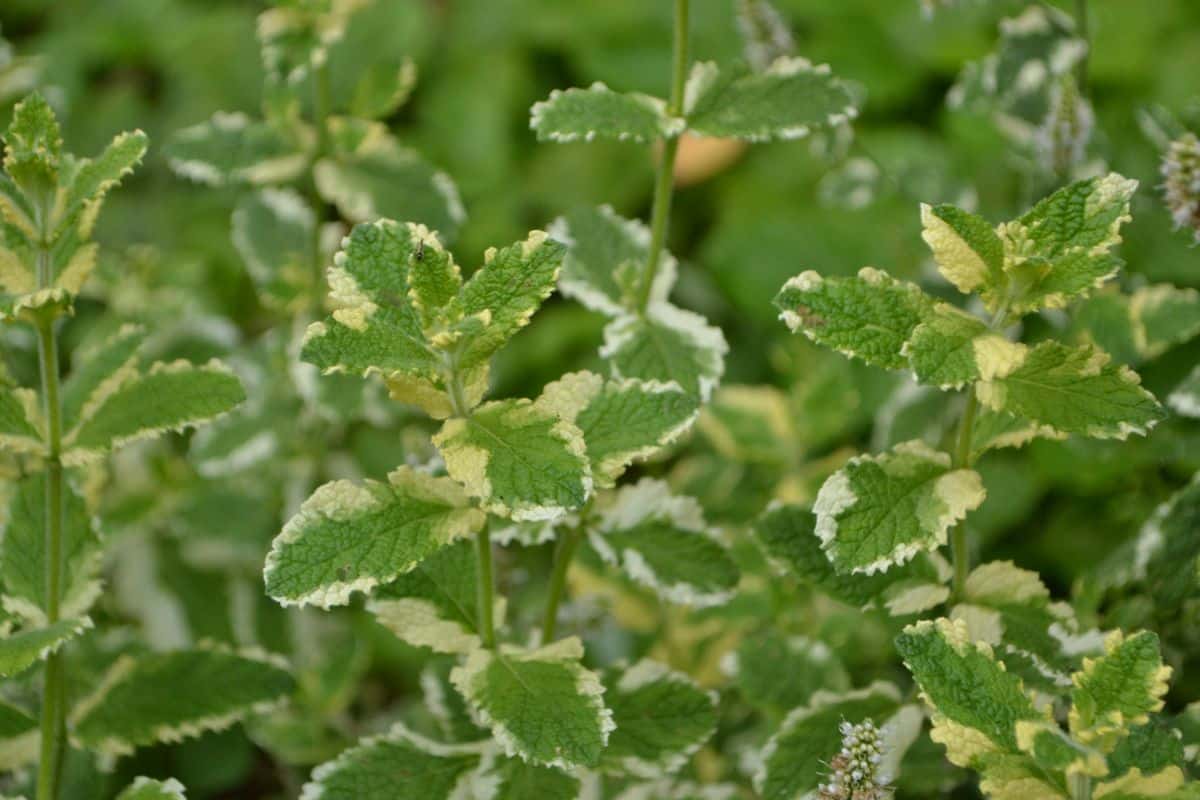
| Plant name: | Pineapple mint |
| Light requirements: | Full sun to part shade |
| Water requirements: | Moderate |
| Growing zone: | Zones 5 to 9 |
Pineapple mint is actually a variety of apple mint, but this cultivar has intriguing, variegated leaves that add to its allure. However, if you want to keep your pineapple mint looking prim, you will need to prune your plant regularly, as variegated pineapple mint leaves have a tendency to revert back to all green leaves. At times, pineapple mint plants can produce pure white leaves, but these leaves are more sensitive to sunburn, and they are generally short-lived.
Like apple mint, pineapple mint leaves are covered in fine hairs, which give the plant an interesting, fuzzy texture. Use pineapple mint as an edible, or grow it as an ornamental in container gardens or porch planters. Either way, this unique mint variety is a must-have plant if you love using fresh mint in your cooking!
17. Lavender mint (Mentha piperita ‘Lavender’)
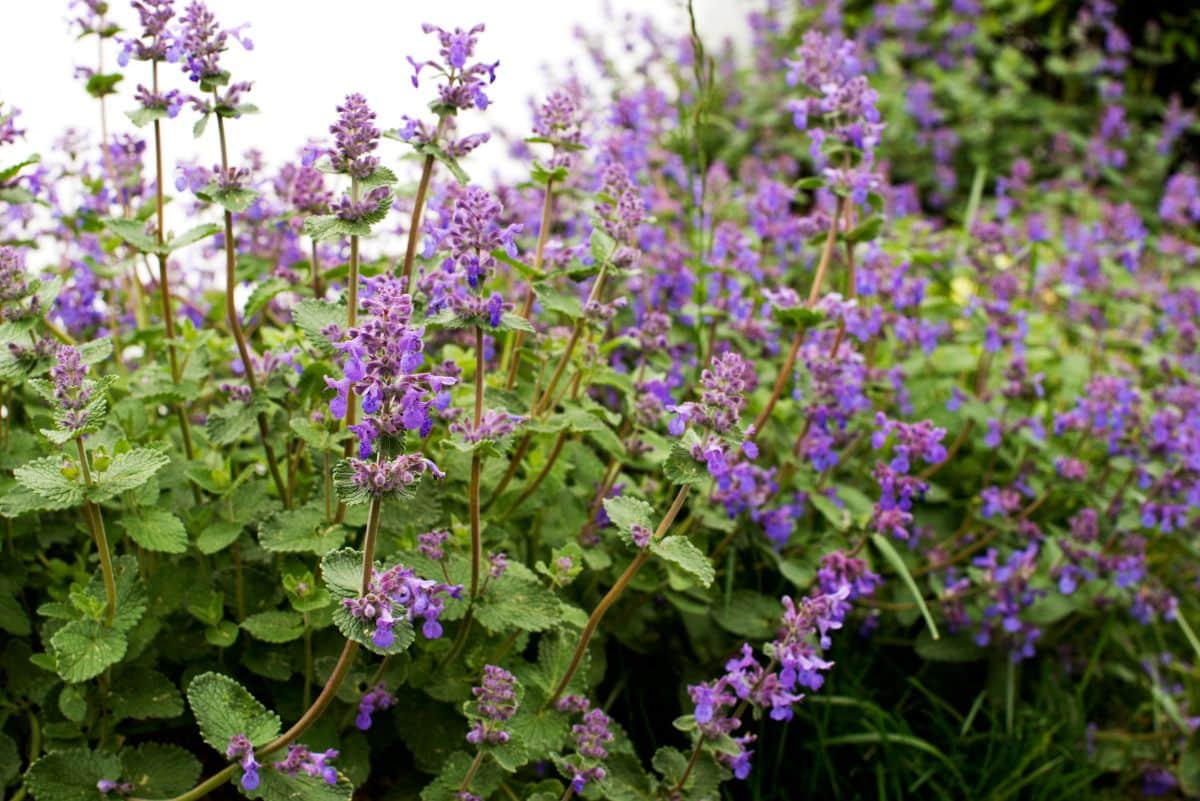
| Plant name: | Lavender mint |
| Light requirements: | Full sun to part shade |
| Water requirements: | Moderate |
| Growing zone: | Zones 3 to 7 |
Lavender mint is a less common mint variety, but it’s worth tracking down if you love unusual plants and that fresh minty flavor. A variety of peppermint, lavender mint has the same purplish-red stems that you can find on other Mentha piperita plants; however, lavender mint has a more delicate aroma that smells a bit like lavender. In summer to early fall, these plants also yield a profusion of purple blossoms, which make charming additions to porch planters and cottage gardens too!
Like other mint plants, lavender mint can grow aggressively, so it should be kept in pots or raised beds if you don’t want to prune it often. These plants also have square stems, which is one easy way to differentiate plants in the mint family from other aromatic and ornamental plants. Lavender mint leaves can be used fresh or dried in teas, baked goods, and savory recipes as well.
18. Basil mint (Mentha x piperita f.citrata 'Basil')
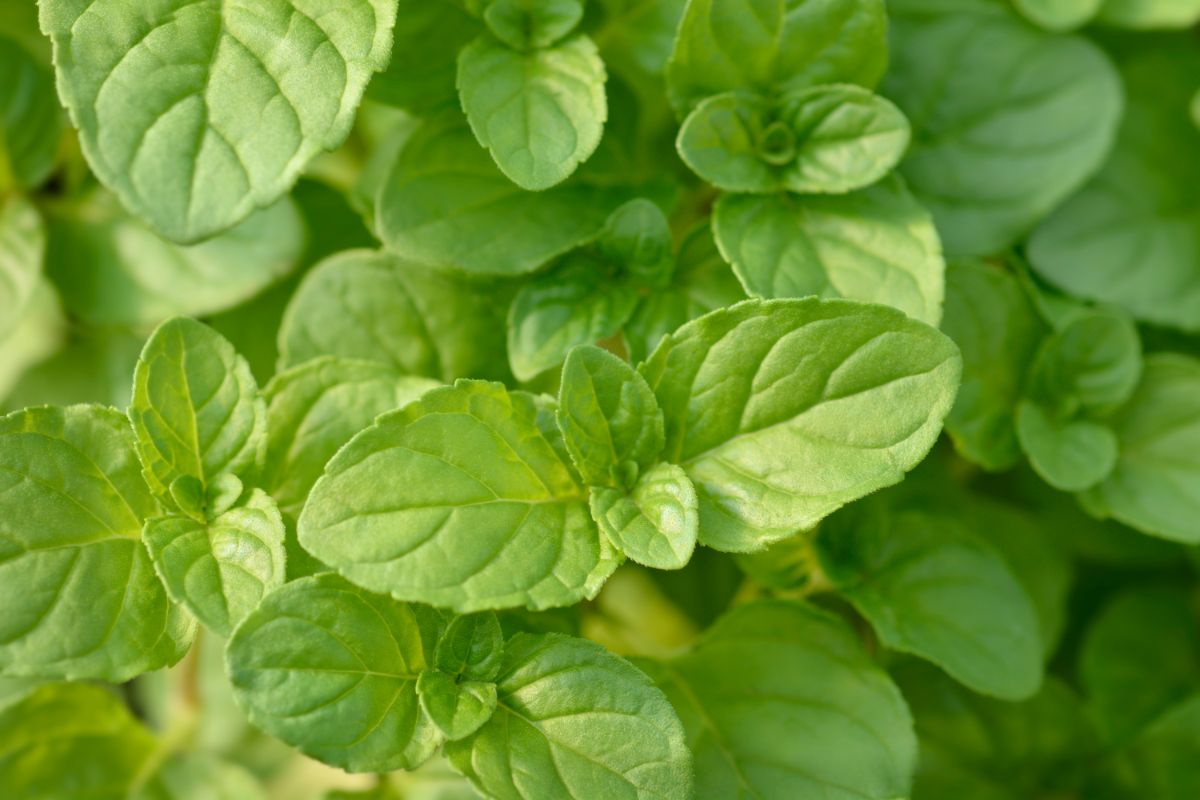
| Plant name: | Basil mint |
| Light requirements: | Full sun to part shade |
| Water requirements: | Moderate |
| Growing zone: | Zones 3 to 7 |
Combining the best of both worlds, basil mint is a hybrid plant that has a unique flavor that tastes a bit like mint and a bit like basil! Useful in pestos, pasta dishes, salads, and more, basil mint has all the delicious flavor you could want in an easy-to-grow package. However, these plants can be difficult to find at local nurseries, so you may need to order them online.
When mature, basil mint plants will grow to about 2’ tall, and plants spread about 2’ wide. For best growth, locate basil mint plants in full sun to part shade and water them often to keep them growing strong. If you don’t want to use basil mint plants in your recipes, you can cultivate them as ornamentals or dry the leaves for potpourri making!
Frequently asked questions
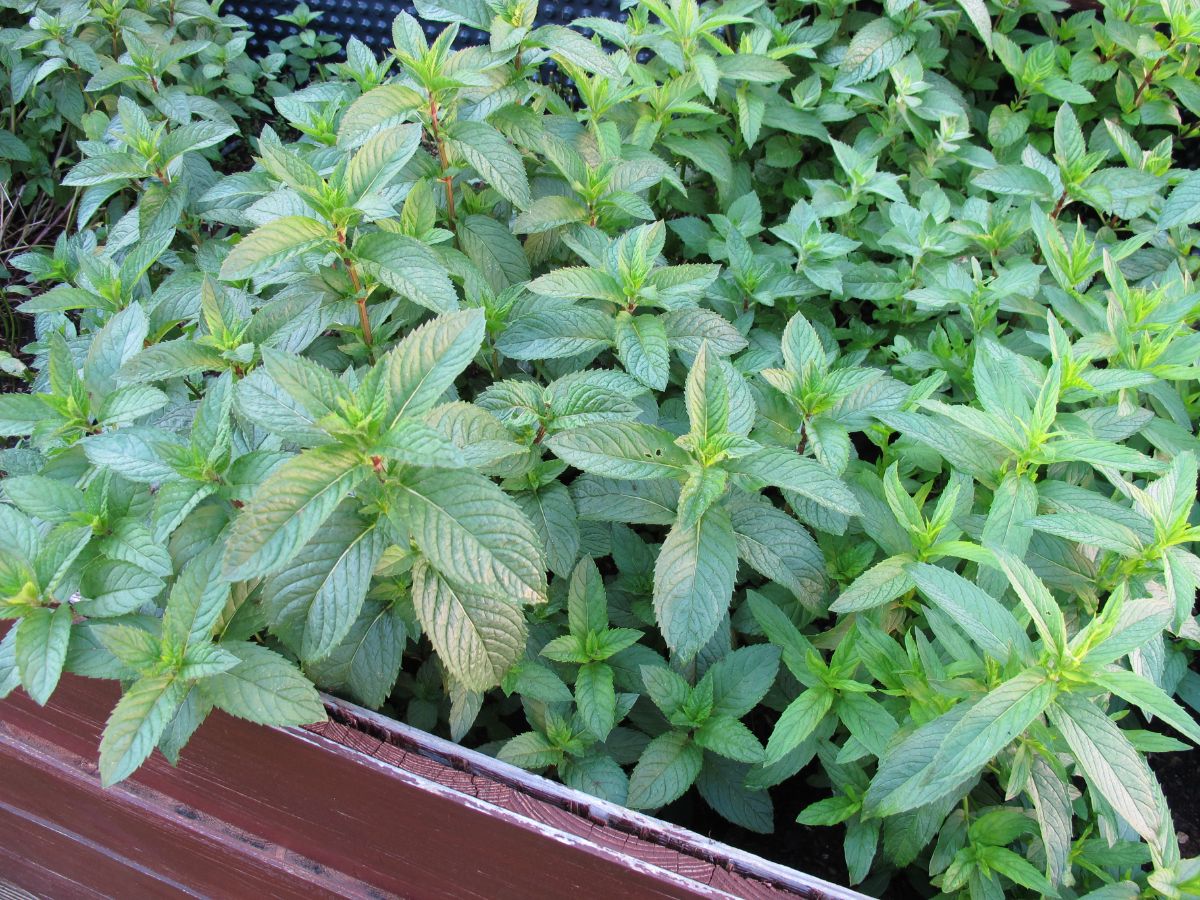
Arguably, spearmint is the most popular type of mint, although peppermint is a close second. Versatile and delicious, spearmint leaves can be used to flavor fresh salads, but they can also be baked into desserts or brewed into hot and cold beverages.
The mint family (Lamiaceae) is a large one, and it includes over 7,000 different species. Beyond true mint plants, the mint family also includes most of our favorite culinary herbs, such as sage, oregano, marjoram, lavender, rosemary, and savory.
Most gardeners are very familiar with mint’s aggressive growth rate, and keeping these herbs from taking over can be a challenge. Pruning mint plants and removing their flowers before they go to seed can keep mint plants more manageable. However, the most effective way to control mint plants is to grow these herbs in pots or raised beds.
Summary
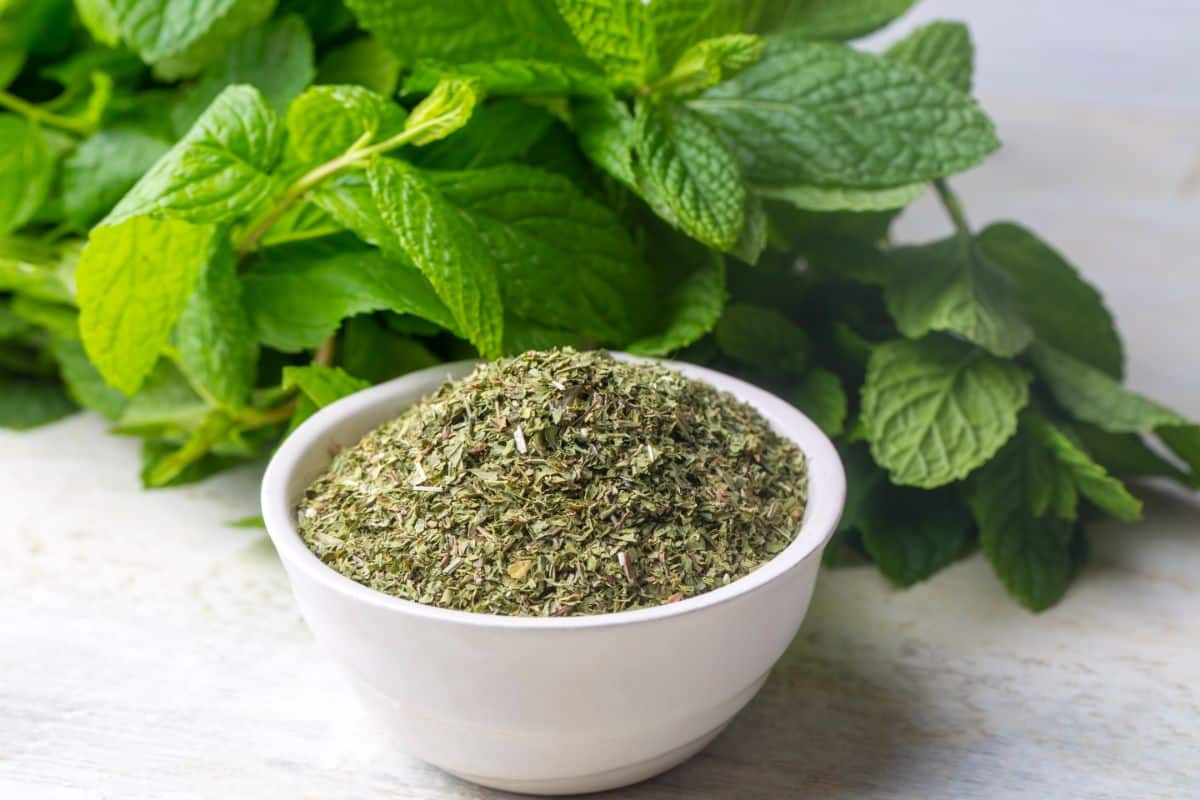
While spearmint and peppermint have their charms, if you’re craving a new variety of edible mint, there are tons of tasty options to choose from. From native plants, like mountain mint and lemon mint, to cold hardy catnip and bee balm, mint plants are highly varied and always rewarding to grow. Whether you keep mint as an ornamental, a pollinator plant, or an edible herb, the hardest part about growing mint is choosing which variety appeals to you most of all!
We hope this article has inspired you to branch out and try some new mint varieties in your herb garden this year. But if you’re already growing mint plants and you need some help preserving your crop, check out our guide on drying herbs or explore more edible plants to grow for herbal teas right here.

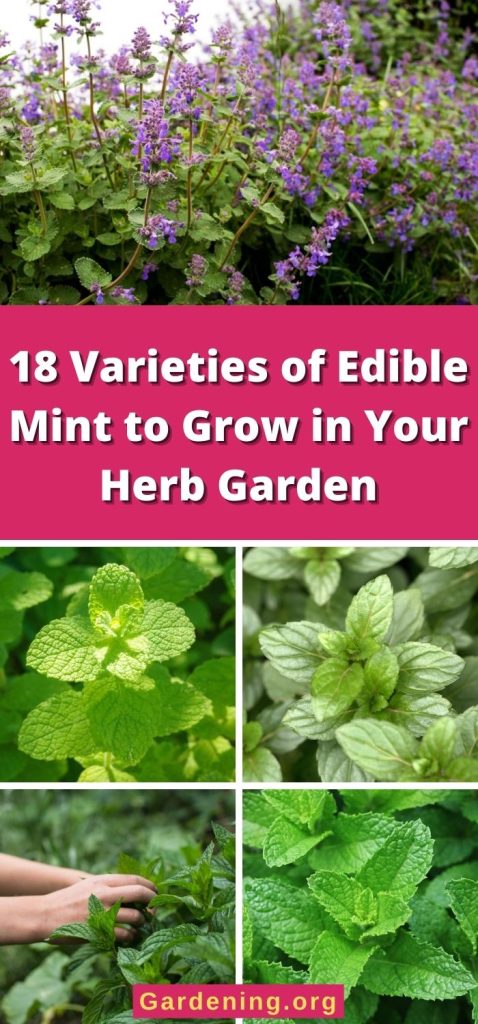

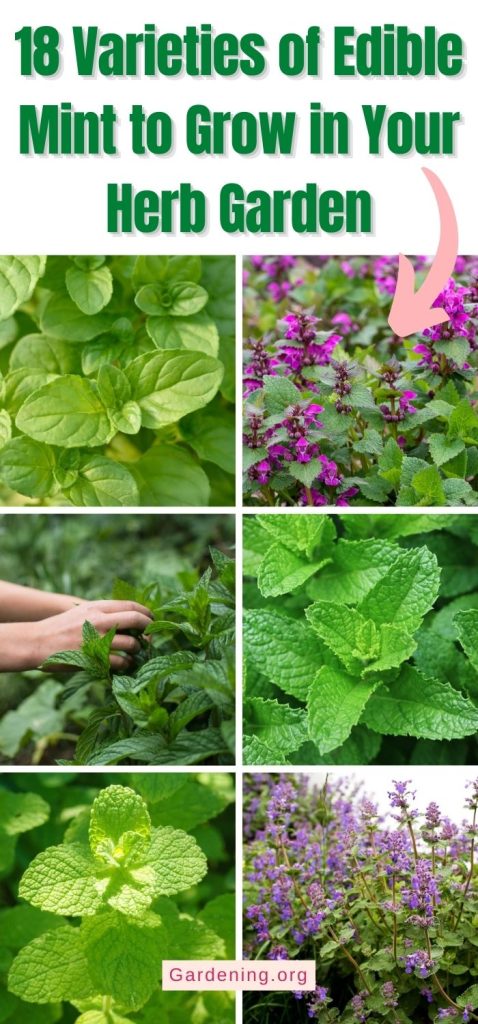


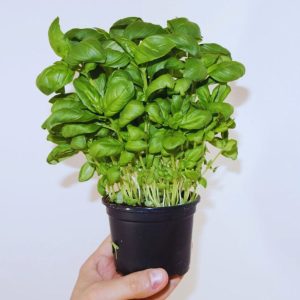

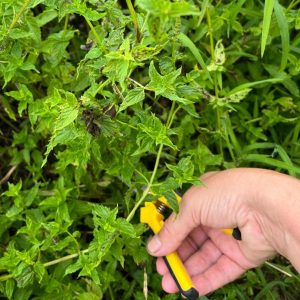
Leave a Reply